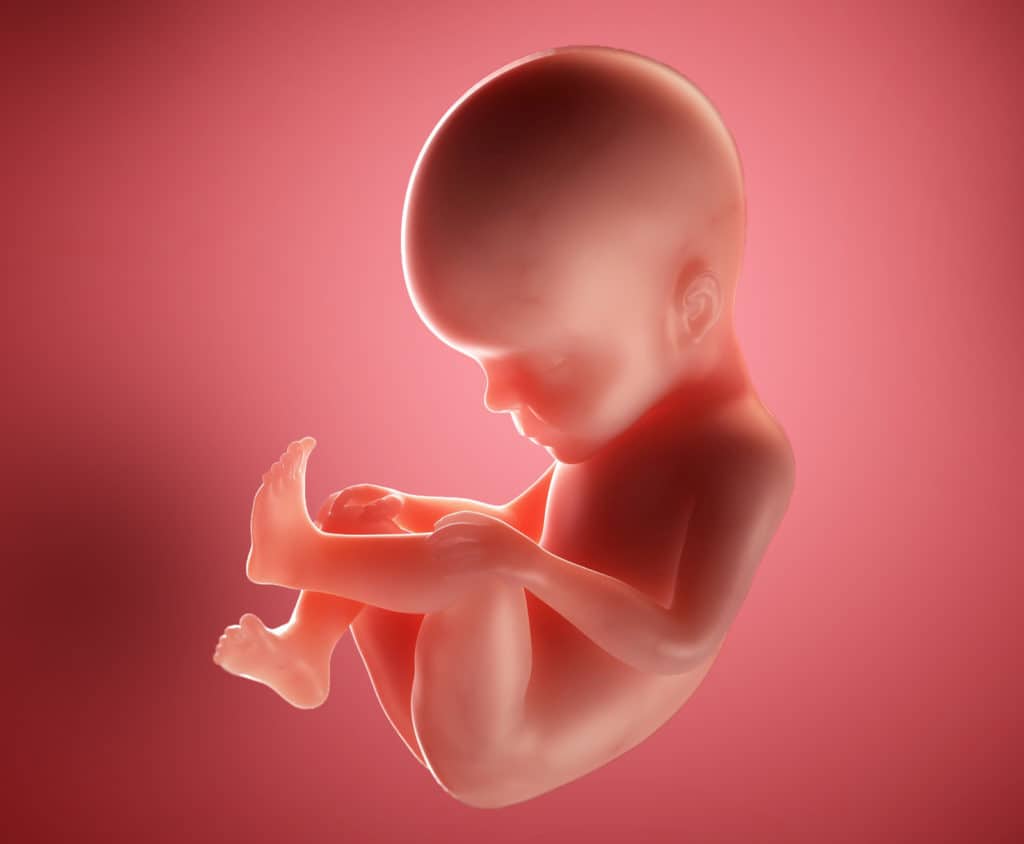
Table of Contents
From the time you have known of your pregnancy, it has perhaps been a wait for fetal development. This biggest milestone has been about the fetal development of the baby. Pregnant moms often wait to hear of the baby’s thump, a reassuring sound from the baby.
However, from the time you hear the sound via a routine checkup, there are major changes that take place with the baby’s heart and circulatory system every week! Isn’t that fascinating? So, let’s take a look at fetal heartbeat and the development of a baby’s heart.
The beginning of the fetal heartbeat: the development of a baby's circulatory system
As fascinating as it might sound, the baby’s fetal circulatory system hasn’t even taken a move as yet, even by the 4th week of pregnancy. Perhaps, it is now just a distinct blood vessel that has begun to form inside the embryo that will later turn into the baby’s fetal circulatory system.
Initially, the heart resembles a tube that has been twisted and divided, later forming in the heart and valves that opens and closes to release the oxygenated blood from the baby’s heart to the body. In fact, by the 5th week, these tubes begin to beat spontaneously but it isn’t audible just yet.
When Does Fetal Heartbeat Start?
This is only by the 6th week that the baby’s heartbeat can be heard that does not beat 110 times in a minute. But, it does have four hollow chambers with an entrance and an exit for each to allow the blood flow as the blood circulation begins. Within the next 2 weeks, the heart rate rises up to 150-170 beats in a minute. Twice as to your heart rate!
Coming back to the question, a mother will be able to hear the baby’s heartbeat in week 9 or 10 for the first time in her pregnancy. This beat then would be about 170 beats in a minute. By now, the doctor would use a handheld ultrasound device known as a Doppler to amplify the sound.
Ultrasound and congenital heart defects of the baby
So, when can you hear a fetal heartbeat? By the 6th or 9th week of your pregnancy, a trained sonographer would perform an ultrasound. In this ultrasound, a mother is confirmed of her pregnancy and an estimate of the due date is made with the number of babies, the placement of the fetus, and of course, the heartbeat.
By the second trimester, the ultrasound would check the baby’s heart structure including the right ventricle, left ventricle, right atrium, and the left atrium, also if the baby is facing any problem known as congenital heart defects. This is common with about 9 of every 1,000 infants born with a congenital heart defect. This has no medication to cure in utero but can help the doctors decide if they would be willing to deliver the baby.
At times this needs to be taken care of with surgery right after birth with others to be cured later in older age with medications. Also, the doctor may prescribe a few medications to decrease the odds of the baby being born early.
Leaving this aside, the best part is that the majority of the congenital heart defects can be managed if detected early and is treated promptly. You’ll need a visit to the cardiologist periodically through from their childhood to adult lives.
When is the baby's heartbeat audible using a simple stethoscope?
By week 12 of the pregnancy, the baby will continue to develop exciting circulatory systems with the bone marrow being produced in the blood cells. The fetal brain is developed and begins to regulate the heartbeat in the 17th week, supporting the outside world. Now, by the 20th week, you’ll be able to hear the little one’s heartbeat with a stethoscope.
The doctors would recommend you to get a fetal echocardiogram for them to have a better hearing that evaluates the fetal heart in between weeks 18 and 24. The rate now would be close to 140 beats per minute and by the 25th week, the smallest blood vessels have started to form and fill the blood. These blood vessels provide blood circulation with more oxygenated blood via the heart’s arteries. This blood flow then reached the tissues of the baby’s body with carbon dioxide or deoxygenated blood back to the baby(s) lungs. This is why the tiny blood vessel organ makes a central component of fetal development.
The fetal circulatory system at birth
The development of the baby’s circulatory system continues to grow all along from the fetus to a full-grown baby by the 40th week. Surprisingly, this fetal circulatory system tends to develop faster and functions quite differently in the uterus than it does when the baby is born.
What makes the difference in the heart muscle before birth is the lungs organ of the baby that isn’t functional, perhaps the baby doesn’t breathe in the uterus late until the baby is born and takes its first breaths. This happens with the relieving of the baby’s developing circulatory system on the umbilical cord to supply oxygen and nutrient-rich blood. In the womb, the umbilical arteries and veins work as tubes to transport the needs of the baby from you to the infant, then they carry the unoxygenated blood with other waste products for removal. In other words, inside the womb, a mother is life support to the baby. Adding to that, the number of shunts a fetal heart has is 3, which directs the blood away from the lungs and the liver.
A baby like you has a pulmonary artery (that brings blood from the heart to the lungs) and aorta (that brings blood from the heart to the body). These are connected to a blood vessel called the ductus arteriosus, which serves to shunt blood away from the lungs in utero. Also, the little one has an opening between the upper chambers of the heart called patent foramen ovale, which shunt blood away from the lungs too.
What are the ways to keep the baby’s heart-healthy providing them nourishment?
- Consuming folic acid before and during pregnancy helps prevent congenital heart disease in babies.
- Quit smoking. According to researchers, maternal smoking especially in the first trimester causes about 2 percent of all heart defects.
- For mothers who have type 2 diabetes or gestational diabetes must keep the blood sugar levels in control during pregnancy as diabetes is associated with a risk of increased heart defects.
- Avoid Accutane for acne.
- Alcohol and recreational drugs are strictly prohibited.
Note – Parents must be prepared that in spite of their precautions, the baby may still be born with a congenital heart defect, and you must know it isn’t your fault. There are numerous factors that can cause it and the doctors have recently started learning of them. However, the good news is that when a baby is seen with heart defects could be treated to live a long, healthy life.
That’s all about the baby’s fetal heart development. Get to know more about the developments that take place in the first month of pregnancy, from this post.
How Does the Fetal Heart Work?
The fetal heart undergoes unique adaptations to support the developing fetus within the protective environment of the womb. Here’s a more detailed explanation of the fetal circulatory system and its distinctive features:
1.Umbilical Cord: The umbilical cord serves as the lifeline between the mother and the fetus. It contains two umbilical arteries and one umbilical vein. Nutrient-rich and oxygenated blood from the mother is transported to the fetus via the umbilical vein, while waste products and deoxygenated blood are carried away from the fetus through the umbilical arteries.
2. Umbilical Arteries and Veins: The umbilical arteries transport deoxygenated blood from the fetus to the placenta, where it is then reoxygenated and receives nutrients. The umbilical vein carries oxygenated blood from the placenta back to the fetus.
3. Three Shunts:
Ductus venosus: This shunt allows a portion of the blood to bypass the liver. Blood coming from the placenta through the umbilical vein can either flow directly to the liver or take a shortcut through the ductus venosus, which directs some of the blood away from the liver and into the inferior vena cava.
Foramen Ovale: This is an opening between the two upper chambers (atria) of the heart. It allows blood to pass from the right atrium to the left atrium, bypassing the lungs. This is because the fetal lungs are not functioning, and oxygen exchange occurs in the placenta.
Ductus Arteriosus: This fetal artery connects the pulmonary artery to the aorta. It provides another bypass for blood to avoid the lungs. Blood from the right ventricle is directed into the pulmonary artery, but instead of going to the lungs, some of it flows through the ductus arteriosus into the aorta, which then delivers oxygenated blood to the body.
4. Fetal Circulation and Lung Bypass: The purpose of these shunts and connections is to direct most of the blood away from the non-functioning fetal lungs. Since the fetus receives oxygen from the mother’s blood through the placenta, there is no need for the lungs to oxygenate the blood. The majority of the blood is shunted away from the lungs to support other vital functions.
5. Post-Birth Changes: When a baby is born and takes its first breath, the fetal circulation undergoes significant changes. The lungs begin to function, and the need for the bypass mechanisms diminishes. The foramen ovale closes as pressure in the left atrium increases, and the ductus arteriosus constricts, eventually closing. These closures redirect blood flow to the lungs for oxygenation.
To Conclude
The fetal heart development of a baby may be quite a hefty task to know about, with the baby’s blood flows, fetal circulation, fluid, and most of the ducts and nutrition attached to it. But a sense of understanding helps mother(s) to gain a sight of a lot through the content above. Therefore, it is also important to understand the importance of maintaining a health system for both the baby and you in order to have a healthy and safe lifestyle.










